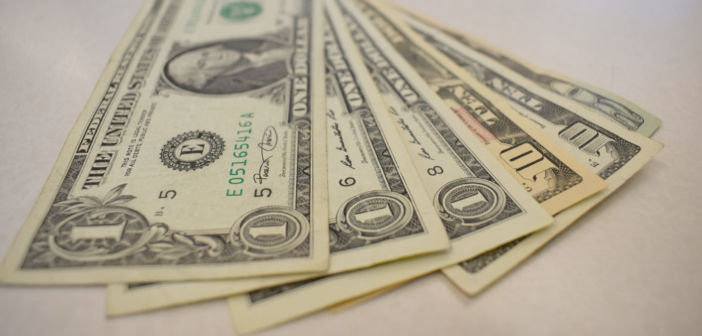Less than a week after applications for President Joe Biden’s student debt relief plan went live, a federal appeals court temporarily blocked the program.
Now, the program has been vacated by a U.S. District Court judge in Texas. The judge ruled the program to be unlawful. The Biden administration has appealed the court decision.
Job Creators Network Foundation filed the lawsuit in Texas on behalf of two federal student loan borrowers who believe they were unfairly excluded from the program.
This lawsuit is separate from the lawsuit in the U.S. Eighth Circuit Court of Appeals where six Republican-led states — Arkansas, Missouri, Nebraska, Iowa, Kansas and South Carolina — filed a motion to stop the program.
The judge argued Biden’s debt relief program was an overreach by the executive branch and usurped congressional authority.
The decision now lies in the U.S. Fifth Circuit Court of Appeals. Any further appeals to the decision will go to the U.S. Supreme Court.
In a statement released on Oct. 21, before the program was found to be unlawful, White House Press Secretary Karine Jean-Pierre encouraged borrowers to continue filling out the application for debt relief despite the temporary order. She said 22 million borrowers had already applied since the application went live in mid-October.
“It is also important to note that the order does not reverse the trial court’s dismissal of the case, or suggest that the case has merit,” Jean-Pierre said in the release. “It merely prevents debt from being discharged until the court makes a decision.”
To apply for the Federal Student Loan Debt Relief, borrowers were to fill out the application on the Federal Student Aid website by the end of this year.
Under the relief plan, the U.S. Department of Education will provide up to $20,000 in debt cancellation to Pell Grant recipients and $10,000 to students who have non-Pell Grant loans held by the department.
However, not all borrowers will be eligible for this debt-relief. A White House press release states borrowers are eligible if their individual income is less than $125,000 — or $250,000 for married couples.
Federal loan payments are deferred while the student is enrolled in school. Jennifer Mertz, Lehigh’s Director of Financial Aid, said there are no payments that currently need to be made.
“The debt relief means that the student will have a lower monthly payment when the loan goes into repayment, which is six months after their last date of enrollment,” Mertz said.
She said currently enrolled students who have taken out federal loans before July 2022 and meet the income threshold will qualify for relief if the block is lifted.
The Biden Administration’s legal justification for the debt-relief plan relies on the Higher Education Relief Opportunities for Students Act of 2003.
According to the opinion of the Department of Justice’s Office of Legal Counsel, the act grants the Secretary of Education the authority to aid in student debt relief as part of the response to the COVID-19 pandemic.
Political science professor Anthony DiMaggio said the act grants the president and executive branch broad authority during times of crisis like the COVID-19 pandemic.
“The Biden plan appears to be on solid constitutional footing,” DiMaggio said.
Fernando Sevilla, ‘24, spoke with The Brown and White in September about his hopes for the debt relief plan. He said he is still optimistic that the plan will go through.
Sevilla did not have to fill out an application for the program. He received an email from the Department of Education informing him that he automatically qualified and his information was already in the system.
“This made it really easy for me to simply sit back and not have to worry about yet another application relating to something important,” Sevilla said.
He said he is still glad he took out loans, even if the program is ultimately terminated and Biden’s appeal does not work out in the program’s favor.
“It sucks that I will have to work to pay off my loans in the future, but at least I would have been able to eat now,” Sevilla said. “Anyway, I think I’ll be alright regardless of the outcome because I was prepared for the worst.”
DiMaggio said the U.S. higher education system has been quietly dismantled over the last few years. As major state universities saw cuts to their budget allocations from states, administrators raised tuition rates to unsustainable levels.
“The obvious way to address this crisis is by forgiving all of these loans via taxpayer funds,” DiMaggio said. “This is an issue thus far of the government really failing to democratically represent young people, who are screaming for loan forgiveness because they cannot shoulder this burden on their own.”






Comment policy
Comments posted to The Brown and White website are reviewed by a moderator before being approved. Incendiary speech or harassing language, including comments targeted at individuals, may be deemed unacceptable and not published. Spam and other soliciting will also be declined.
The Brown and White also reserves the right to not publish entirely anonymous comments.
5 Comments
Suck it up students & pay back your loans like the rest of us did.
This was a vote harvest gimmick by Biden to elect democrats.
You chose Lehigh vs Penn State & Lehigh likely also giving you a grant if family need demonstrated. When you graduate you will make enough money to pay your loans plus donate to Lehigh to thank them for whatever grants they gave you.
Hello – A well written piece though woefully flawed. In an effort to be laconic I’ll zero in on “professor” DiMaggio’s comments (btw is he tenured?). It seems to me that he is the only one who thinks this wealth transfer is within the Constitution – can he please site which sections? (Answer: he can’t). Ergo, the widely held view in both the courts and Congress that this forgiveness scheme is bogus. Heck, even Nancy Pelosi said as much. Second, there is no crisis within higher education per se. The only crisis is how people borrow vast sums to major in subjects that have little market demand. Sorry folks, you can follow your bliss but “caveat emptor”. The reason tuitions are raising above the rate of inflation is due to cheap money (you do realize that the Fed issues you your loan. The Fed borrows at zero and you pay 8% – pretty sweet gig for the Fed.). This cheap money has more people chasing a somewhat finite level of student slots – thus tuition inflation. Simple supply and demand. To add insult to injury, universities now offer more of these dubious degrees along with the related staffing. Again, creating a bloated, expensive system. Finally, the major issue (and one not addressed in this piece) focuses on how is this loan forgiveness equitable to those who either paid their tuition as they went along and/or repaid their loans entirely? Doesn’t sound fair to me. Again, a well written and amusing piece. Pax
Can’t believe you have nothing better to do with your time than writing this silly little thinkpiece, Nicky.
Well I was taking a mini-mental break and thought I’d scroll the B&W. Saw this “news” item and thought I’d help balance the one sided group think. Something that is woefully lacking within the B&W. BTW what is your claim to fame besides trolling (at 10PM on Thanksgiving Eve….LOL)? And how are the observations wrong?
Great piece Maeve! Keep up the excellent work